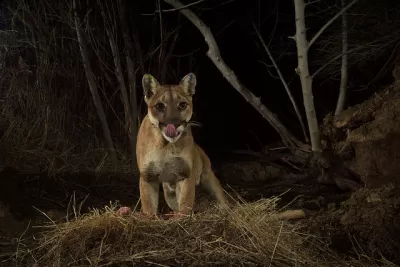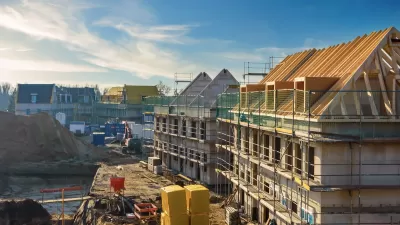Encouraging denser development in urbanized areas is an effective way to protect sensitive flora and fauna from human encroachment.

Protecting sensitive wildlife and building more housing don't have to be mutually exclusive, argues J.P. Rose, senior attorney at the Center for Biological Diversity. "For decades we have built in areas without careful consideration of how it affects wildlife. Sprawling overdevelopment has helped bring us to this extinction crisis — one in which the Quino checkerspot butterflies that once thrived in Southern California are now extremely rare and iconic mountain lions are suffering from inbreeding and genetic isolation."
But protecting wildlife doesn't have to come at the expense of affordable housing, a point brought into sharp relief in February, when the Northern California town of Woodside attempted to evade state housing mandates by designating the entire community as mountain lion habitat.
When my colleagues at the Center for Biological Diversity and I petitioned the California Fish and Game Commission to list Southern California and Central Coast mountain lions as a threatened species, we were not proposing to ban development throughout the state.
Instead, we wanted state officials to help these imperiled cats by building wildlife crossings, prohibiting rat poison use and factoring in how new development affects connectivity.
As Rose writes, the solution is infill development. "It’s time to stop seeing large swaths of open space as the best places to build. Cities and counties must steer development toward jobs and transportation centers to address the need for affordable housing. Focusing on wildlife-friendly infill development and building up, not out, is the thoughtful way to grow."
"In Ventura County, the board of supervisors passed two ordinances that increase protections for wildlife corridors by setting development standards and requiring environmental review for projects that block connectivity." Rose praises these ordinances, saying he hopes that similar policies will follow in more communities.
FULL STORY: Guest column: California has room for mountain lions and affordable housing

Study: Maui’s Plan to Convert Vacation Rentals to Long-Term Housing Could Cause Nearly $1 Billion Economic Loss
The plan would reduce visitor accommodation by 25,% resulting in 1,900 jobs lost.

Alabama: Trump Terminates Settlements for Black Communities Harmed By Raw Sewage
Trump deemed the landmark civil rights agreement “illegal DEI and environmental justice policy.”

Why Should We Subsidize Public Transportation?
Many public transit agencies face financial stress due to rising costs, declining fare revenue, and declining subsidies. Transit advocates must provide a strong business case for increasing public transit funding.

Paris Bike Boom Leads to Steep Drop in Air Pollution
The French city’s air quality has improved dramatically in the past 20 years, coinciding with a growth in cycling.

Why Housing Costs More to Build in California Than in Texas
Hard costs like labor and materials combined with ‘soft’ costs such as permitting make building in the San Francisco Bay Area almost three times as costly as in Texas cities.

San Diego County Sees a Rise in Urban Coyotes
San Diego County experiences a rise in urban coyotes, as sightings become prevalent throughout its urban neighbourhoods and surrounding areas.
Urban Design for Planners 1: Software Tools
This six-course series explores essential urban design concepts using open source software and equips planners with the tools they need to participate fully in the urban design process.
Planning for Universal Design
Learn the tools for implementing Universal Design in planning regulations.
Smith Gee Studio
Alamo Area Metropolitan Planning Organization
City of Santa Clarita
Institute for Housing and Urban Development Studies (IHS)
City of Grandview
Harvard GSD Executive Education
Toledo-Lucas County Plan Commissions
Salt Lake City
NYU Wagner Graduate School of Public Service





























